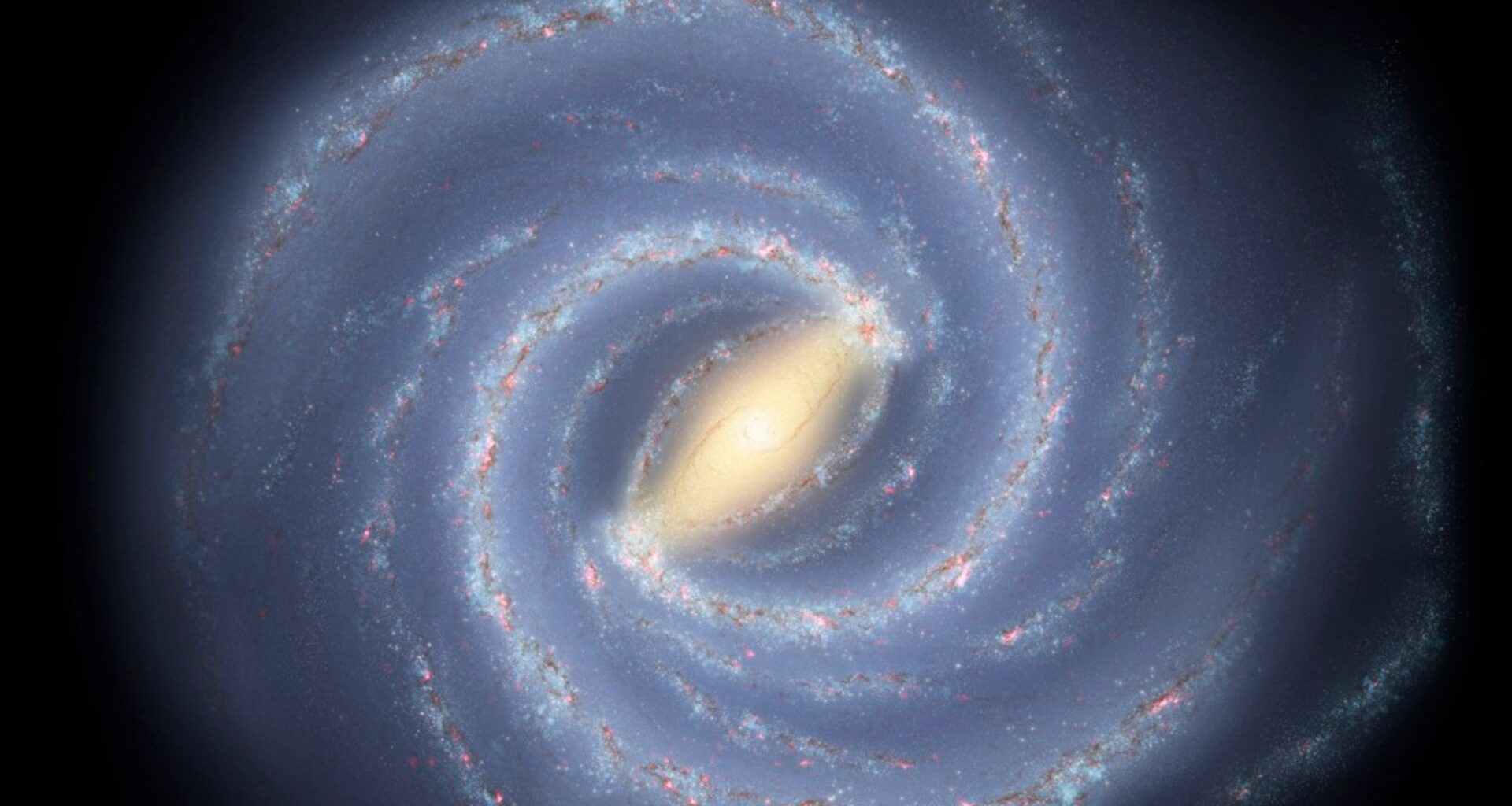Dark matter has long been the universe’s most profound ghost, its existence confirmed only by the gravitational havoc it wreaks on visible galaxies.
Now, a team from the University of Tokyo suggests they may have gathered “direct evidence” of dark matter, which could mean that humanity has, for the very first time, effectively “seen” the unseen.
The observations came from data collected by NASA’s Fermi Gamma-ray Space Telescope, a satellite specifically designed to hunt for the universe’s most energetic light.
Interestingly, the gamma rays observed in the data perfectly matched those predicted by the annihilation model for theoretical dark matter particles.
“If this is correct, to the extent of my knowledge, it would mark the first time humanity has ‘seen’ dark matter,” said Professor Tomonori Totani from the Department of Astronomy at Tokyo University.
 Gamma-ray intensity map. The horizontal gray bar in the central region corresponds to the Galactic plane area, which was excluded from the analysis. Tomonori Totani, The University of Tokyo
Gamma-ray intensity map. The horizontal gray bar in the central region corresponds to the Galactic plane area, which was excluded from the analysis. Tomonori Totani, The University of Tokyo
Intense gamma-ray
To delve deeper into this new study, let’s first rewind a bit.
The entire concept of dark matter dates back to the early 1930s, when Swiss astronomer Fritz Zwicky observed that galaxies in the Coma cluster were moving far too fast. What was most surprising was that there wasn’t enough visible mass to hold them together.
He suggested that some “dunkle Materie,” or dark matter, was providing the missing gravitational glue, working like “invisible scaffolding” to keep galaxies together.
Years later, scientists came to accept the existence of dark matter, estimating that it makes up 85% of the universe’s mass. But direct proof remained elusive.
We can’t observe dark matter directly because it doesn’t interact with light — it neither absorbs, reflects, nor emits it.
The prevailing hypothesis suggests dark matter is composed of Weakly Interacting Massive Particles (WIMPs). Theoretically, when two WIMPs collide, they instantly annihilate each other, releasing a shower of other particles, including high-energy gamma-ray photons.
In this new work, the team targeted the center of the Milky Way, a region where dark matter is expected to be highly concentrated.
The analysis revealed an unexpected surge of high-energy light. Specifically, the study detected gamma rays with an immense photon energy of 20 gigaelectronvolts (20 GeV) emanating from the galactic core.
“We detected gamma rays with an extremely large amount of energy, extending in a halolike structure toward the center of the Milky Way galaxy. The gamma-ray emission component closely matches the shape expected from the dark matter halo,” said Totani.
More validation required
The detected energy spectrum perfectly matches the theoretical prediction for WIMP annihilation, suggesting the particles have a mass about 500 times that of a proton.
This is huge. It is a precise fingerprint.
Moreover, the researchers note that this specific radiation pattern is not readily explained by other astronomical phenomena, such as supernovae or rapidly spinning pulsars. Therefore, the data represent a “strong indication of gamma-ray emission from dark matter.”
“And it turns out that dark matter is a new particle not included in the current standard model of particle physics. This signifies a major development in astronomy and physics,” said Totani.
The scientific community is excited but cautious. The finding now enters a period of intense scrutiny. Other research groups must perform independent analysis to verify the signals.
Tohani himself asserts that more data is needed to validate the findings. Additional proof would come from detecting the same 20 GeV gamma-ray signal from other dark matter-rich locations, such as dwarf galaxies orbiting the Milky Way.
For now, however, the universe’s greatest secret may have finally begun to shine.
The findings were reported in the Journal of Cosmology and Astroparticle Physics on November 25.

